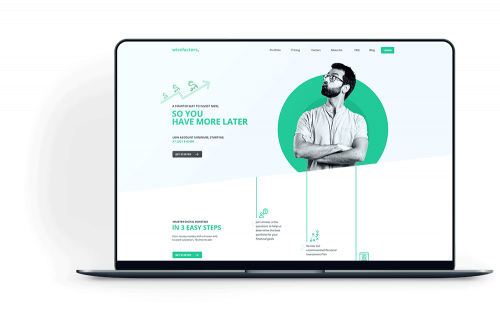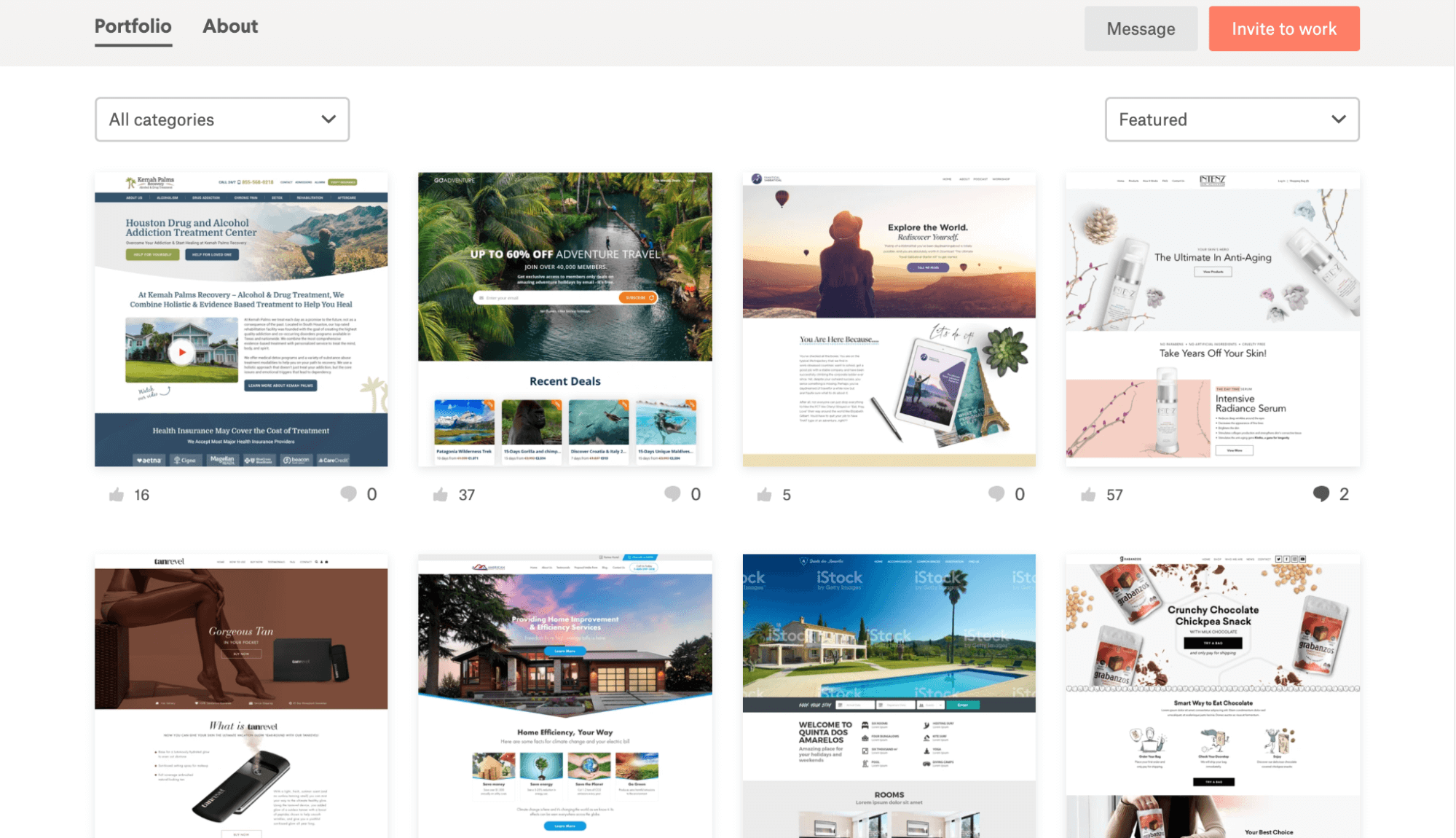Necessary Tools Every Developer Needs for Magnificent Website Design
Necessary Tools Every Developer Needs for Magnificent Website Design
Blog Article
Take Full Advantage Of Involvement: Proven Techniques for Impressive Website Design
In a significantly electronic landscape, the significance of a user-centric method to internet site layout can not be overemphasized. Understanding how effective navigation, aesthetic pecking order, and material optimization assemble to improve user interaction is essential for any kind of organization seeking to make a significant effect. As we explore various tested techniques that contribute to outstanding site design, the interplay in between these components exposes not just finest practices yet additionally ingenious approaches that can elevate customer experience. What might amaze you is exactly how easy adjustments can result in remarkable makeovers in engagement metrics.
Relevance of User-Centric Style
User-centric design is essential in creating reliable websites, as it focuses on the demands and choices of the end customer from the very start of the style process (website design). This method ensures that the internet site is customized to supply an optimal experience for users, assisting in interaction and satisfaction. By comprehending user habits, objectives, and pain points, designers can develop interfaces that reverberate with their target audience and promote a feeling of link
Executing user-centric design involves comprehensive research, including customer personalities and trip mapping, which assist in identifying the details requirements of different user segments. This data-driven method permits notified choices regarding content, capability, and layout, inevitably leading to the production of a more intuitive and appealing internet experience.
In an affordable electronic landscape, prioritizing user-centric design is not just advantageous; it is crucial for driving engagement, lowering bounce rates, and fostering customer commitment. Reliable websites are those that reverberate with users, making user-centric style an essential principle for effective internet advancement.
Effective Navigation Approaches
A well-structured navigating system is a foundation of efficient site layout, developing straight on the concepts of user-centric layout. Reliable navigating permits users to discover details swiftly and with ease, enhancing their overall experience and encouraging longer gos to.
To achieve this, think about executing a clear pecking order in your navigation food selection. Main classifications must be promptly noticeable, while subcategories can be exposed through dropdowns or expandable menus. This organization aids customers expect where they could locate appropriate material, lowering aggravation.

Consistency is vital; use acquainted terminology and layout aspects throughout the website to stay clear of complication. Breadcrumb tracks can additionally be useful, providing customers with contextual understanding of their area within the site and making it possible for simple backtracking.
Finally, make sure that your navigation is receptive and mobile-friendly. As more users gain access to sites by means of smart phones, adjusting your navigating for smaller sized screens is vital for maintaining usability and ease of access. By focusing on these techniques, you can produce a smooth navigation experience that maintains individuals engaged.
Visual Hierarchy and Layout
Establishing a clear aesthetic power structure is essential for leading users with an internet site's material successfully. A well-structured design not only improves individual experience however likewise influences just how visitors perceive and communicate with details. By purposefully using size, shade, spacing, and contrast, designers can produce prime focus that accentuate one of the most critical aspects, such as headings, calls to activity, or pictures.
Integrating a grid system can further enhance aesthetic power structure by giving a regular framework for content positioning. This company allows customers to navigate the site with ease, making it simpler to digest details (website design). Additionally, making use of whitespace is crucial; it produces breathing space around components, minimizing cognitive overload and emphasizing crucial material

Content Optimization Techniques
While creating visually appealing styles is necessary, the efficiency of a web site inevitably hinges on how well its content is enhanced for both online search engine and customer interaction. Content optimization includes a tactical strategy that enhances presence and importance, Home Page eventually driving website traffic and retaining site visitors.
First, keyword research study is basic. Recognizing relevant keyword phrases that straighten with user intent enables the integration of these terms naturally right into headings, message, and meta descriptions. This not only assists in rating greater on search engines yet likewise boosts the clearness of content for individuals.

Additionally, maximizing for regional SEO can basics enhance engagement for region-specific target markets. Including localized keyword phrases and developing material that addresses local interests enhances relevance.
Last but not least, regularly upgrading material guarantees that it stays fresh and important, interesting both online search engine and returning individuals. By concentrating on these material optimization strategies, companies can create a compelling on the internet presence that cultivates communication and drives conversions.
Responsive and Mobile-First Approaches
Customer engagement and web content visibility are significantly influenced by the ability of a website to adapt seamlessly across different tools. With the increase of mobile browsing, using receptive style and mobile-first techniques has come to be necessary for effective web growth. Responsive layout guarantees that a solitary site layout adjusts fluidly to different screen sizes, from desktop computers to smartphones, therefore supplying a regular customer experience.
On the other hand, a mobile-first strategy prioritizes the mobile customer experience during the style procedure. Deliberately for smaller sized screens at first, designers can concentrate on vital functions and boost efficiency, ensuring that individuals are not overwhelmed by unnecessary web content. This technique likewise enhances filling times, which is critical for keeping visitors.
Both methods contribute to greater interaction prices, as individuals are more probable to connect with a website that is user-friendly and visually enticing. Moreover, search engines prefer mobile-optimized sites in rankings, therefore enhancing presence. In recap, taking on receptive and mobile-first design techniques is important for making the most of look at this website customer interaction and making certain that content remains obtainable and efficient across all devices.
Verdict
Finally, the implementation of user-centric design concepts is essential for maximizing involvement in web site design. Reliable navigating techniques, a distinct aesthetic hierarchy, and optimization of content considerably boost user experience. In addition, taking on receptive and mobile-first strategies makes sure availability throughout different devices. Jointly, these methods not just promote details retrieval but additionally foster deeper user communication, ultimately adding to higher involvement prices and overall website success. Focusing on these components is necessary for effective website design.
As we check out various tested techniques that contribute to outstanding website style, the interaction between these elements discloses not only ideal techniques but also cutting-edge methods that can elevate individual experience.User-centric layout is vital in producing reliable internet sites, as it focuses on the demands and preferences of the end individual from the very beginning of the design procedure. Reliable web sites are those that resonate with customers, making user-centric layout a fundamental principle for successful internet growth.
Responsive style makes sure that a solitary website layout adjusts fluidly to different display dimensions, from desktop computers to mobile phones, consequently providing a regular customer experience.
In summary, adopting mobile-first and responsive style strategies is important for optimizing individual involvement and making sure that content remains accessible and efficient throughout all tools.
Report this page